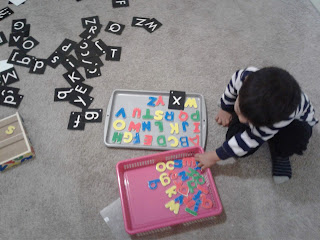Even though I am not a full-time homeschooler but I still consider myself a part-time homeschooler. As I mentioned in my previous posts, I started reading books with my children at home soon after their birth. I utilized my teacher's education and online educational resources to plan and do activities with my children to help them read, write, count, think, explore and experiment. I also took my children to library programs and early years center activities to familiarize them with the school environment and to get them comfortable interacting with other children. Additionally, providing opportunities to children for outdoor exploration and learning and having them participate in physical activities like Karate lessons and swimming classes greatly helped in building confidence and high self-esteem. Moreover, hosting activities and camps at my home for the neighbourhood kids also was a great learning experience for me and my children. All of this really gave my daughter a head-start when she started in kindergarten. I hope the same for my son as well who will start kindergarten next September.
In my previous posts, I shared preschool activities, art and crafts and STEM challenges, which I planned and did with children. In this post, I will share a few more projects which were exciting yet, full of learning for the children. The first one is the puppet show using the paper bag puppets. We worked together and made a variety of simple puppets of animals and people using paper bags, construction paper, scissors and glue. Then we planned our own plays/stories, set up a stage and performed in pairs and groups. I was surprised by their creativity and wild imagination. We shared lots of giggles and learned to work together.
A variety of cute paper bagpuppets made by children and their puppet shows<3
The next project was making borax crystals at home. I had a big box of borax at home, which I bought for making slime. So, I found this cool project online of making crystals using a hot borax solution, pipe cleaners, string and dowels. To begin with, we rolled our pipe cleaners in the shape of compact coils. Some children chose to use pipe cleaners of more than one colour. Then, we prepared a super-saturated solution of borax in boiling water and submerged our pipe cleaners in the solution for overnight. The next day, the children were excited to see their sparkling, crystallized pipe cleaners. Of course, they wanted to make more. So, we used the same solution by boiling it and dissolving some more borax in it. 'I wonder' questions by the children about the whole process of crystallization made them curious and encouraged them to learn more about solutions and crystallization. Some of the questions were: "I wonder why do we need to put borax in boiling hot water", "Why do we have to wait overnight for the crystals to form?", "Can we make crystals using something other than borax like salt, sugar, baking powder, etc.?, "Will our crystals melt in sun?". One child discovered that the crystals 'melt' in water. For future, the children wanted to experiment crytallizing snowflakes, icicles and dream catchers made with pipe cleaners.
Preparation of the borax crystals and the beautiful, shiny crystals
The next project was making papier mache bowls. This project was a bit messier and required patience and time. Younger children needed more help. But we learned teamwork and perseverance, which was crucial for this project. We used balloons mounted on glasses to mold our bowls. Children were surprised to learn that they can use flour mixture to stick instead of glue. One child wanted to experiment other household items which can be used as glue such as oil, soap, lotion, etc. The children covered the round portion of their balloons with pieces of flyers in multiple layers. Then we we left our balloons to dry overnight. The next day, we popped our balloons to get our bowls and then we decorated them using our creative minds. The end results were beautiful.
Papier Mache bowls
Another project was the grocery shopping pretend play, which we did on a Friday evening. We started by learning about Canadian coins and bills and made our own play money. This activity promoted practice for cutting using scissors and writing numbers. My daughter was so surprised to know that there are no bills or coins for $3, $4, $6,..... She asked: If there is no bill for $3, $4, $6,.... then how can we pay for the items which cost $3, $4, $6,.... ?" The next step was setting up the grocery store using recycled items and deciding the price for each item using the flyers. I loved the eco-literacy aspect and the math connection for this project. Then we got into the pretend play mode. We got our wallets and reusable grocery bags ready to go for shopping. We had fun switching roles of cashier and shoppers. Then came the real math challenge: to pay for the purchased items! We were able to do lots of math talk and we practised counting using fingers. It was a great achievement for my 5-year old when she finally figured out how she can pay 9 dollars using a $5 bill, a toonie and two loonies. Overall, it was a lot of authentic learning along with pure fun and family time.
Grocery Shopping Pretend Play
























